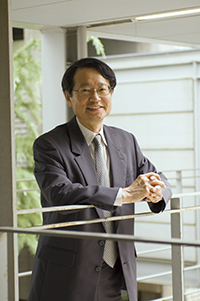Welcome to the History Museum of J-Koreans
The History Museum of J-Koreans was established in 2005 in Minato-ku, Tokyo to exhibit artifacts that capture the history and the lives of Zainichi (lit. “residing in Japan”; resident) Koreans, also known as J-Koreans. The collections contain valuable information on Korean migration to Japan, living conditions, civil rights movements, ethnic education, cultural activities, and more.
The museum’s mission is to sustain the autonomy of Zainichi Korean identity for future generations by providing knowledge that will help them appreciate the rich, complex history of the Zainichi community and develop cultural pride in who they are. This is more important now than ever, considering the generational shifts the past decades have witnessed.
Additionally, we believe that examining the 100-year history of Zainichi Koreans will contribute to the realization of a truly multicultural society in Japan. While we still have a long way to go, we intend to continue developing this museum into a site devoted to the serious study of Zainichi Koreans.
Greetings from the Director
A Hub for Disseminating the History and Culture of Zainichi Koreans

Sungsi Lee President
Since its establishment in 2005, the History Museum of J-Koreans has aided in the dissemination of Zainichi history and culture through exhibit items provided by Zainichi Koreans from all over Japan and through periodic Saturday seminars. It is said that there are some 7 million Koreans living abroad, but Zainichi Koreans are notable for their particular historical background. Zainichi history can be traced as far back as 1897, when the first wave of Korean laborers immigrated to Japan.
Through the forces of annexation and colonization, the number of Koreans who were left with little choice but to move to Japan had reached over 2 million by 1945. Even after liberation, roughly 600,000 Zainichi remained in Japanese society. The painful history of Zainichi Koreans is a mirror that reflects the very history of modern Japan. At the same time, if we turn out attention to the rest of the world, we can see there are countless people living outside their homelands, due to a variety of reasons. It can thus be argued that we are living in an era of diaspora, and that the history of Zainichi Koreans can be positioned as an important part of a larger history of diaspora.
Multicultural coexistence (tabunka kyōsei) is not an easy thing to achieve; multicultural conflict is far more common. In that sense, Zainichi history and culture is not simply an inheritance born out of a particular relationship to Japanese society but a shared asset of the world, since it contains many hard-won lessons that can help solve various problems faced by humanity. As an institution that aims to serve as a hub for connecting 7 million overseas Koreans as well as deepening historical awareness of global migrations caused by modern society, the History Museum of J-Koreans will surely serve an ever-greater role.
We will continue to strive to fulfill our core mission of disseminating Zainichi history and culture with the kind cooperation of Zainichi Koreans from all over Japan. In order to pass on that history and culture to the next generation, it is necessary to unveil, exhibit, and research materials that are yet to be discovered. We sincerely thank you for your continued interest and support.
〈profile〉
Sungsi Lee was named Director in April 2017, after having served as a member of the Board of Trustees for the History Museum of J-Koreans since the opening of the museum in 2005.
Sungsi Lee was born in Nagoya in 1952. He is a second-generation Zainichi Korean. He was promoted to full professor in the Faculty of Letters, Arts and Sciences at Waseda University in 1997, after serving as an associate professor in the Faculty of Education at Yokohama National University and at the School of Humanities and Social Sciences at Waseda University. He holds a doctorate in literature, with a specialization in East Asian ancient history. He also serves as Vice President for Cultural Affairs at Waseda University.
Lee's major publications include Royal Power and Trade in East Asia, The People and Nations of Ancient East Asia, The Formation of the East Asian Cultural Sphere, The Invention of Ancient History, Viewpoints of Colonial Modernitye in East Asia, The People and Nations of Ancient East Asia, The Formation of the East Asian Cultural Sphere, The Invention of Ancient History, Viewpoints of Colonial Modernity, and The Waseda of International Students: Encounters with the Intellectual Horizons of Modern Japan.